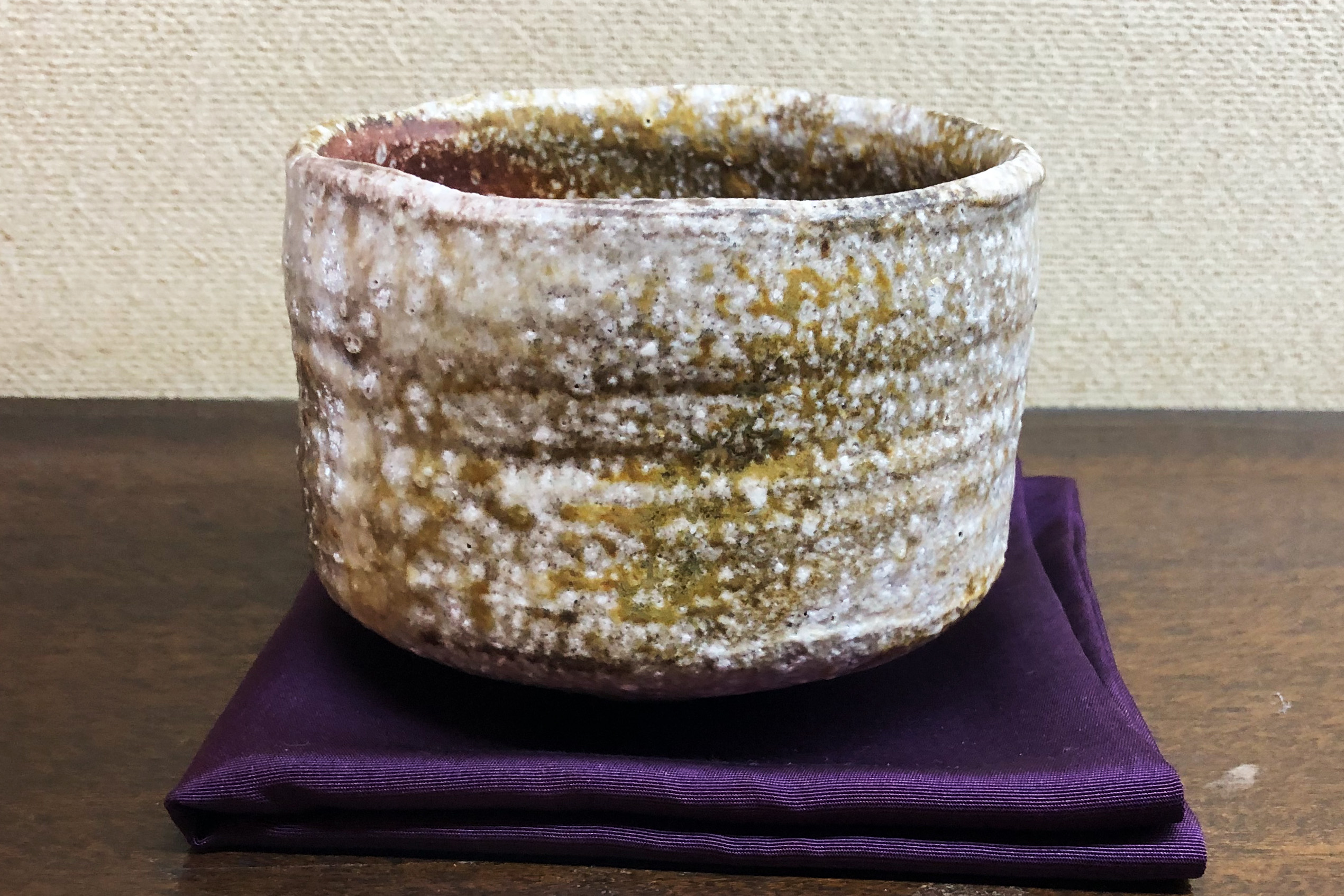No tea can be enjoyed without a vessel. And Shigarakiyaki (信楽焼) in Shiga Prefecture is one of the oldest poetry styles in Japan. In fact, it is known as one of the 6 ancient kilns of Japan and the history of Shigarakiyaki dates back to the 8th century.
The clay used for Shigarakiyaki generally comes from the nearby lake called Biwa. It is white in colour, but is known to be a little rough. After firing Shigaraki wares often develop a brownish/redish color and gain a rather grainy texture. The clay is also fire resistant (the wares can be fired at high temperatures), so it is highly suitable for larger items like braziers and jars.
In early years Shigaraki produced many everyday items, useful for nearby farmers. However, as the tea ceremony developed in the 16th century, Shigaraki started producing more tea utensils, like matcha bowls, water containers, vases, etc. They were greatly appreciated by the tea masters for their rustic look that fit very well with the wabi philosophy of the day.
The wares fired in the traditional rising kilns like anagama and noborigama, gained the beautiful natural glazing from the burning ashes. Sometimes the side of a vessel would turn dark gray from the ashes burning in the fire, and sometimes you could even get beautiful crystalized amber-like droplets of the melted ashes on the vessel surface.
Nowadays most pottery regions have moved to more modern firing methods of electric and gas kilns, that are easier to control and provide a more predictable appearance. In Shigaraki City, however, there are still a few pottery artists that fire their wares the traditional way – using the old-style anagama or noborigama kilns.
For pottery lovers Shigaraki is a great place to visit (even if it is a little bit inconvenient by public transport). And on your first step in town you will be greeted by sculptures of the town symbol raccoon dog – tanuki, that is meant to bring good luck and prosperity. Do mark it on a map for your next trip!
*The bowl in the image was made by a pottery artist Houzan Tanii

